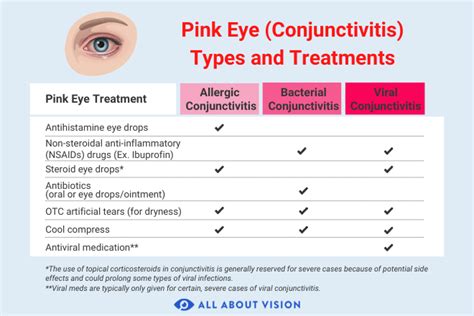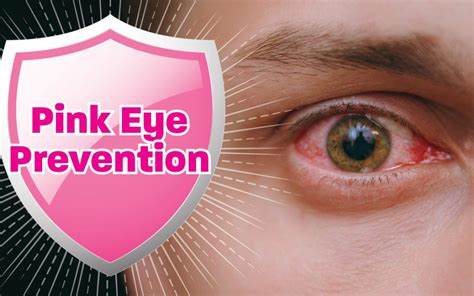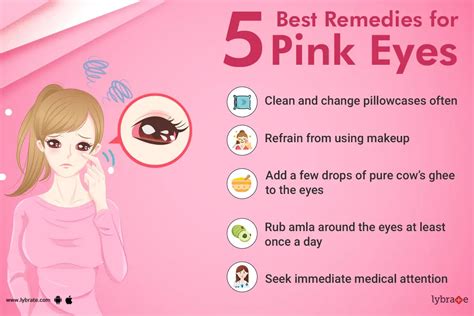Intro
Treat pink eye effectively with 5 proven methods, alleviating conjunctivitis symptoms, reducing inflammation, and promoting fast recovery from eye infections and irritations.
Pink eye, also known as conjunctivitis, is a common and highly contagious eye infection that affects millions of people worldwide. It is characterized by redness, itching, and discharge in the eyes, and can be caused by a variety of factors, including viruses, bacteria, allergens, and irritants. If left untreated, pink eye can lead to complications such as vision loss, eye pain, and even blindness. Therefore, it is essential to seek medical attention if you suspect that you or someone you know has pink eye.
The importance of treating pink eye cannot be overstated. Not only can it help to alleviate symptoms and prevent complications, but it can also help to prevent the spread of the infection to others. Pink eye is highly contagious, and can be spread through direct contact with an infected person, or through contact with contaminated surfaces or objects. By treating pink eye promptly and effectively, individuals can help to protect themselves and those around them from this highly contagious infection.
In addition to seeking medical attention, there are several ways to treat pink eye at home. These include applying warm compresses to the eyes, using over-the-counter eye drops or ointments, and practicing good hygiene to prevent the spread of the infection. In some cases, antibiotic eye drops or ointments may be prescribed to treat bacterial pink eye. It is essential to follow the instructions of a healthcare professional and to complete the full course of treatment to ensure that the infection is fully cleared.
Understanding Pink Eye

Causes of Pink Eye
Pink eye can be caused by a variety of factors, including: * Viral infections, such as the common cold or flu * Bacterial infections, such as strep throat or sinus infections * Allergens, such as pollen or dust * Irritants, such as chemicals or smoke * Contact lenses, which can increase the risk of infection It is essential to determine the cause of pink eye in order to receive proper treatment and to prevent complications.Treatment Options for Pink Eye

Home Remedies for Pink Eye
In addition to seeking medical attention, there are several home remedies that can help to alleviate symptoms and promote healing. These include: * Applying warm compresses to the eyes * Using over-the-counter eye drops or ointments * Practicing good hygiene, such as washing hands frequently and avoiding sharing makeup or contact lenses * Getting plenty of rest and avoiding strenuous activities * Avoiding rubbing or touching the eyes, which can irritate the eyes and spread the infectionPreventing Pink Eye

Complications of Pink Eye
If left untreated, pink eye can lead to complications such as vision loss, eye pain, and even blindness. It is essential to seek medical attention if you suspect that you or someone you know has pink eye, and to follow the instructions of a healthcare professional to ensure that the infection is fully cleared.5 Ways to Treat Pink Eye

Conclusion and Next Steps
In conclusion, pink eye is a common and highly contagious eye infection that can be caused by a variety of factors. It is essential to seek medical attention if you suspect that you or someone you know has pink eye, and to follow the instructions of a healthcare professional to ensure that the infection is fully cleared. By practicing good hygiene, applying warm compresses, using over-the-counter eye drops or ointments, getting plenty of rest, and seeking medical attention, individuals can help to alleviate symptoms, promote healing, and prevent complications.What are the symptoms of pink eye?
+The symptoms of pink eye can vary depending on the cause, but common symptoms include redness, itching, discharge, and tearing.
How is pink eye treated?
+Pink eye can be treated with antibiotic eye drops or ointments, antiviral medications, anti-allergy medications, over-the-counter eye drops or ointments, and warm compresses.
Can pink eye be prevented?
+Yes, pink eye can be prevented by practicing good hygiene, avoiding touching or rubbing the eyes, getting plenty of rest, and avoiding sharing personal items.
What are the complications of pink eye?
+If left untreated, pink eye can lead to complications such as vision loss, eye pain, and even blindness.
How long does it take to recover from pink eye?
+The recovery time for pink eye can vary depending on the cause and severity of the infection, but most people can recover within 7-10 days with proper treatment.
